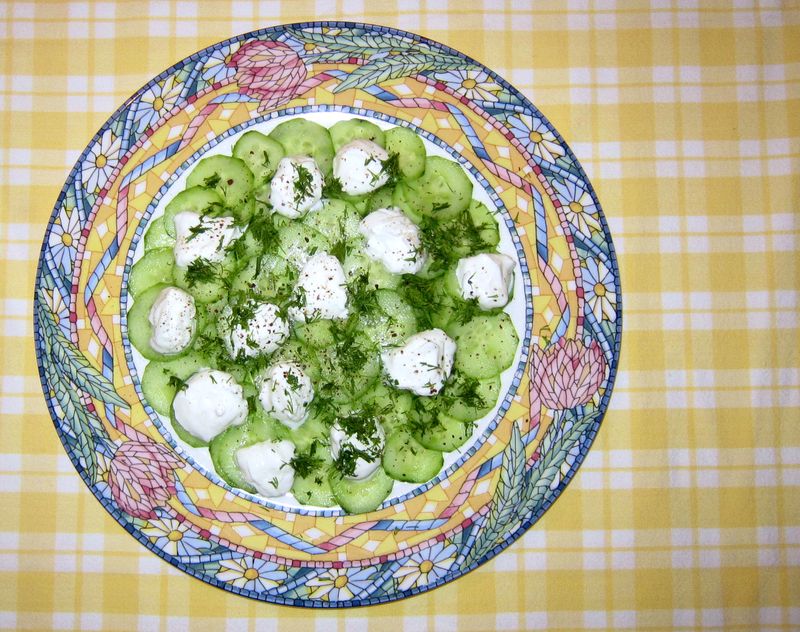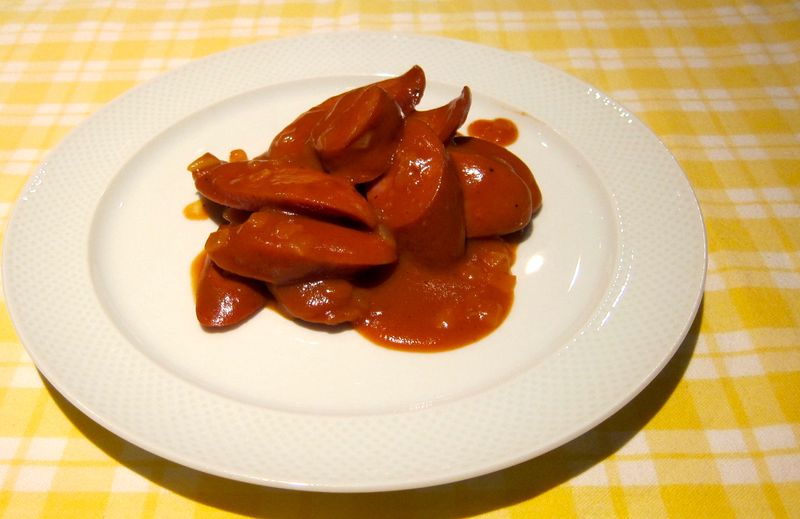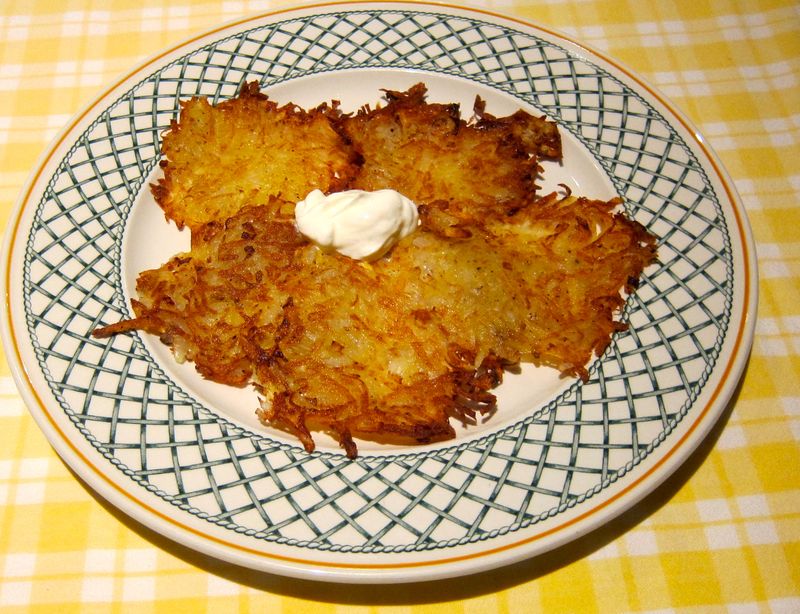At this point, I need light and lean. But this was not to be; tonight was Polish night so the fare was hearty and filling. Typical Polish meals include meat, in particular pork, ham and sausages served with dumplings, potatoes or noodles with sauce. Bread (Chleb) and bread rolls (Bułka) remain one of the most important foods in the Polish cuisine. Thick soups and pickled foods like beets and herring are also very popular. Sour cream, curd cheese soured milk and dill weed are used liberally.
"Tłusty Czwartek" (Fat Thursday) is a Catholic feast celebrated on the last Thursday before Lent and on that day, Polish citizens consume almost 100 million paczki (Polish donuts) altogether. Vodka and beer are considered essential fluids.
Notable dishes include a hunter's stew called Bigos (sauerkraut, sausage and other assorted meats), Barszez (beetroot soup), Zurek (sour rye meal mash) and aspics of meat or fish.
...and consonants, lots of consonants.
Josée's Polish offering:
Mizeria
Kielbasa
Placki
Mizeria is a salad of thinly sliced cucumber topped with lemon, sour cream and dill. According to legend, this was a favorite dish of the 16th century Queen Bona Sforza's. Though she adored the dish, it is said she was always moved to tears while consuming it; she would become overwhelmed with homesickness because the dish reminded her of her native home in Italy, giving the dish its melancholic name.
Kielbasa, a pork and beef sausage, was prepared in a sauce of onions, beef broth and tomato paste.
The Plaki are made by mixing finely chopped potatoes and onions. Dollops of the mixture are flatten in a hot skillet and browned; served with sour cream.
We passed on the Vodka.
Joseph Froncioni











































































































Comments